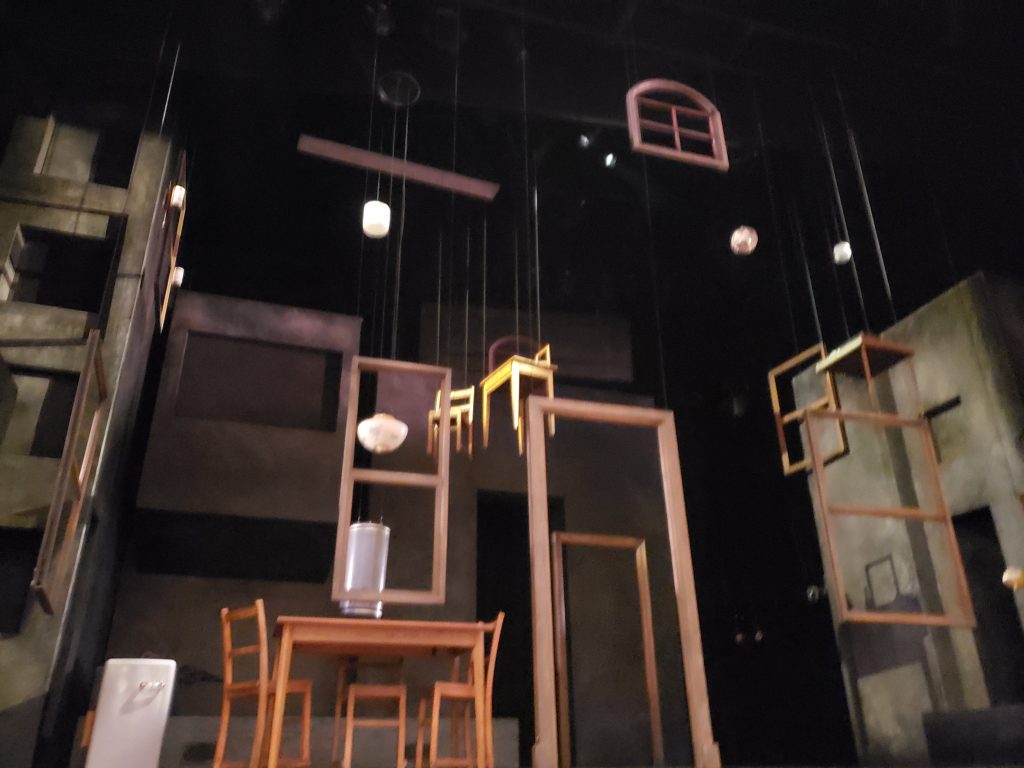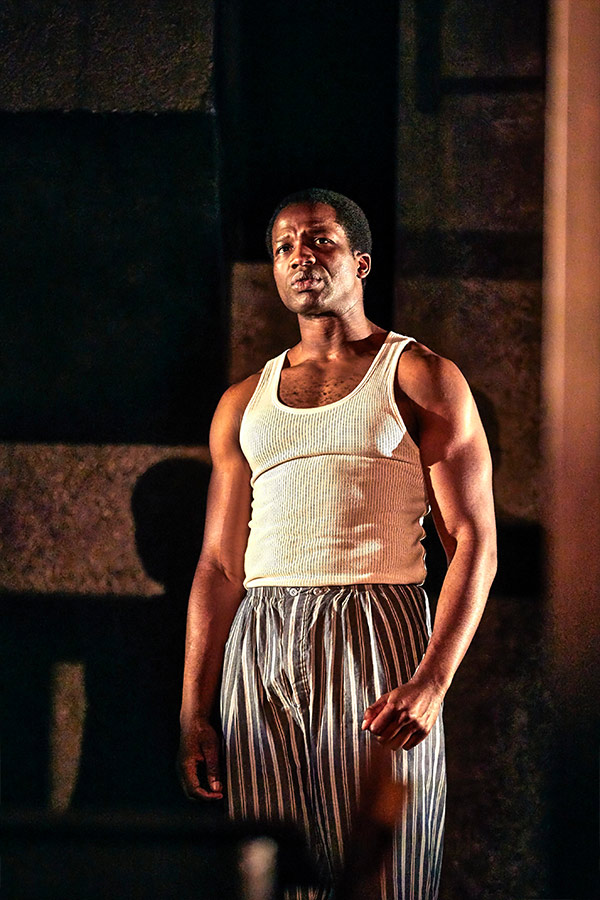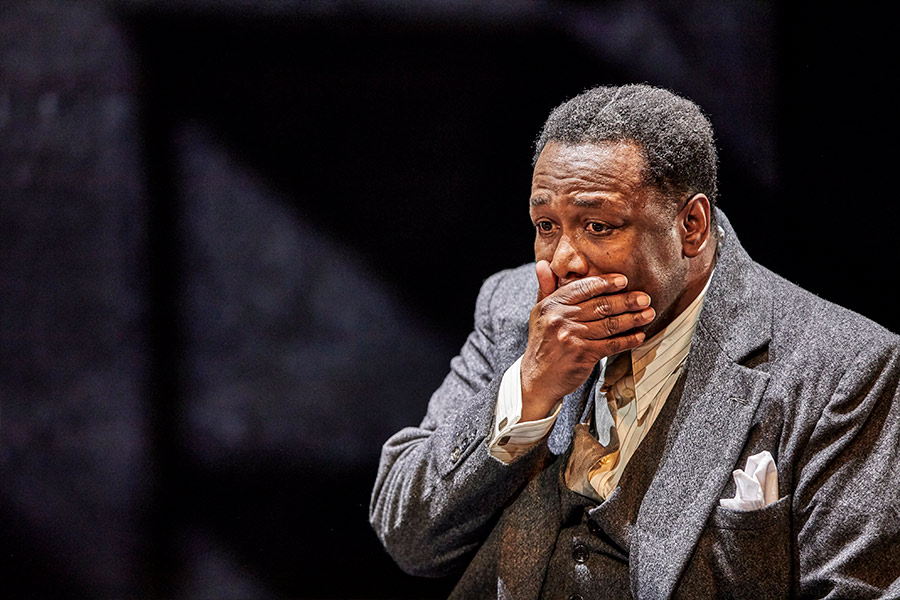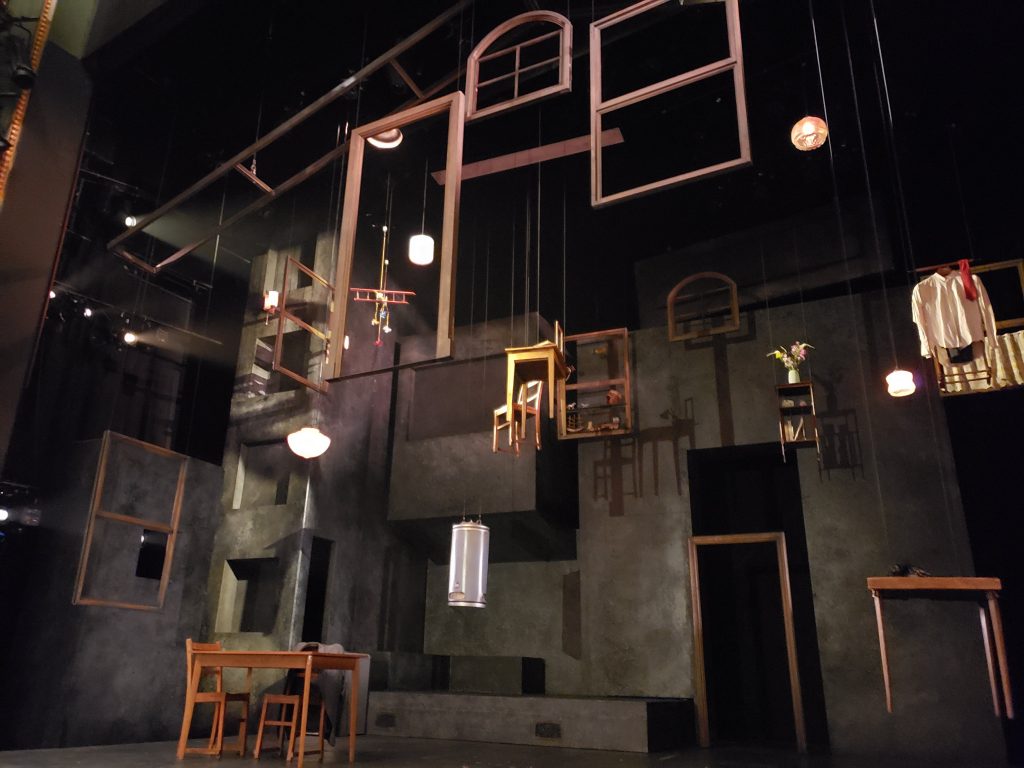Arthur Miller’s Death Of A Salesman is certainly an American classic, having been in virtually continuous performance on stages across the country since it’s premier in 1949. A favourite from college theatre programmes to Broadway or regional repertory companies. That the Young Vic chose to produce it for its Off-Westend space on The Cut, in Waterloo, isn’t then a shock. That it chose to do so with a mostly black cast (the entire Loman family, and some others) maybe was. That the Young Vic production, co-directed by Marianne Elliott and Miranda Cromwell, and starring Wendell Pierce as Willie Loman, went on to be a sell out, and transferred to the Piccadilly Theatre, on the West End, is no surprise at all.
It’s just that good.
Joining Pierce in the cast are Sharon Clarke as his long suffering wife Linda (of course, as every wife in a Miller play), Sope Dirisu as son Biff, Natey Jones as younger son Hap, Joseph Mydell as Uncle Ben (a dream device), and Trevor Cooper as Charley, the neighbour; Ian Bonar, Victoria Hamilton-Barritt, Emmanuel Ogunjinmi, Matthew Seadon-Young, Carole Stennett, Nenda Neurer, and Femi Temowo round out the cast, some playing multiple characters.
The set is a lovely piece of spatial trickery. Massive, foreboding walls ring the stage, pierced here and there with passageways, and mostly just sink into the background. Suspended in air, however, are door & window frames, tables, chairs, mirrors, lamps, wall sconces, etc. The entire insides of a home, from the water heater to the window sill; all hang in silence, waiting their turn. There are a couple of set pieces — the fridge, a filing cabinet — which slide on from the wings, but pretty much everything else flies in and out, but never leaves our view, due to the total lack of drapery — the teasers and tormentors of a typical proscenium production.

Not having seen the original Young Vic staging, Pawn cannot state this with certainty, but strongly suggests that these choices by designer Anna Fleischle was based on the more flexible space available there.
No synopsis should be needed for this show. Willie is 63 years old, has been working for the same firm for more than half his life, and has recently lost his salary and now only earns commissions. He’s been feeling shaky lately, having a harder time driving his territory, which takes him from his Yonkers home to the far reaches of New England, selling whatever it is he sells (not important to the story). He’s not been the best of men, but he has to tell himself that he is, it’s part of what a salesman has to do to keep himself going.

Likewise, his boys, Biff and Hap (shortened from Happy, nickname for Harold), the former a football star in school, who blew his chance at a scholarship by failing maths, the latter a fast talking accounts clerk, imagining himself heading his department by years end.

The essential conflict in this story is between Willie’s overly high expectations for Biff, and Biff’s struggle against an unspoken scar left from some event fifteen years past. I shan’t ruin that, for those unfamiliar with the story, but I will say that as gifted as Wendell Pierce is in his portrayal of WIllie, it is Sope Dirisu’s turn as Biff which brings down the house. His performance is one for the ages. Not to take anything away from any in this all star cast.
Cooper, as Charley, provides both a comedic and observant counterweight to Loman’s overwrought angst and hyperbolic outbursts. His performance as even as his character’s patience and affection for the voluble Loman. Clarke’s Linda is the other counterweight, on the domestic front, always abiding her husband’s outbursts and suffering with him in his silent descent into whatever is gripping at his soul. Her final scene is sure to bring tears to many eyes, a fact proved by the people in the row ahead of me digging for tissues in their purses.

By the end of the play, the stage pieces (above), have been flown to the height they would rest at in the real house, creating the illusion of a physical first storey where no floor exists. It is a fitting metaphor for a home (final payment made just as the final denouement occurs) which looks solid while melting into air (to paraphrase Karl Marx).
Oh, and that bit about race? That thing where the Loman family, and some secondary characters are black, not white as in the original? What does that matter? Ultimately, it means nothing. Some may well seek and find racial allegory in this choice, but Pawn feels that it just doesn’t matter, and that that is the point of the casting choice. Or it could be.
During interval, a discussion with an older couple seated just down the row found them asking whether Pawn felt it mattered, not being as familiar with American race relations as they are with British. They were genuinely curious, and it lead to an interesting discussion. My main thought, at the midway point of the show, was that more theatres should pursue this casting so both to provide more meaty roles to actors of colour and the make manifest that, underneath such differences, we are all the same. A father’s dreams for his sons is a fierce driver.
Pawn loved this show. That it ran three hours (with 15 minute interval) puts it at the edge of most modern productions, but it was well worth it. Heavy for a matinee? Yes, but still well worth it.
Death of a Salesman runs from 24 October at the Piccadilly Theatre. Booking information at https://www.youngvic.org/perfs/2276
